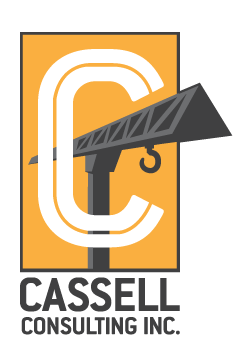Re-printed with the permission of Viewpoint Construction Software, Inc.
MANAGING THE PAPER EXPLOSION
“ECM integration provides a central storage and management solution for all electronic documentation. Additionally, centralized storage provides a principal administration portal for security, access, archiving, backup, and retention.”
As a company grows, so too does the paperwork. Invoices begin to pile up and critical project emails get lost in your inbox. Many Accounting departments have experienced the “manila folder” of paperwork only to discover some key invoices or receipts are missing. What about the Payroll group? Spreadsheets of hours worked by an ever-rotating cast of those in the field begin to get confusing fast without some strategy for organization. Fortunately, there are contemporary software tools designed to manage, organize and distribute your company documents. Today’s Enterprise Content Management (ECM) tools are designed for complete integration with your ERP software suite and are easy to learn and use by anyone in your organization. For a better understanding of what to look for when considering an ECM solution, I’ve provided some helpful features to think about.
Enterprise Content Management (ECM) is the strategies, methods and tools used to capture, manage, store, preserve, and deliver content and documents related to organizational processes. ECM tools and strategies allow the management of an organization’s unstructured information, wherever that information exists. In other words, ECM cleans up the mess of scattered documents, data and information and puts them securely in a digital safe for easy organization, access and distribution.
“ECM system is the ability to get out what you put in quickly, when you need it. By having strong indexing, taxonomy, and repository services, locating the information in your system is a snap.”
Workflow and Document Management
Because the core information about a company and its projects is represented by electronic documents today, ECM has a key role to play in continuity. After all, without access to the most vital electronic documents, a business simply can’t move forward or grow. ECM technologies allow the creation of centralized repositories where all vital corporate information can reside – a major component of this is Workflow.
Workflow
Workflow is now commonly associated with the manual processes of managing documents including approvals and prioritizing the order of documents. However, in the case of exceptions, workflow also escalates decisions to the next person in the hierarchy. These decisions are based on pre-defined rules developed by system owners. Effective workflow management should include the following functions:
- Visualization of process and organization structures
- Capture, administration, visualization, and delivery of grouped information with its associated documents or data
- Incorporation of data processing tools (such as specific applications) and documents (such as office products)
- Parallel and sequential processing of procedures including simultaneous saving
- Reminders, deadlines, delegation, and other administration functionalities
- Monitoring and documentation of process status, routing and outcomes
- Tools for designing and displaying process
Document Management
Document management technology helps companies better manage the creation, revision, approval, and consumption of electronic documents. It provides key features such as library services, document profiling, searching, check-in, check-out, version control, revision history and document security. Content of long-term business value are deemed records and managed according to a retention schedule that determines how long a record is kept based on either outside regulations or internal business practices.
Storage Types
As we all know, content needs to “live” somewhere, and where that content lives determines ease and speed of access. Storage technology (optical disks, magnetic, tape, microfilm, RAID, paper) provide options for storing content online for rapid access or off-line for content that isn’t needed often. That said, one of the greatest benefits of a contemporary ECM system is the ability to get out what you put in quickly, when you need it. By having strong indexing, taxonomy, and repository services, locating the information in your system is a snap. ECM integration provides a central storage and management solution for all electronic documentation. Additionally, centralized storage provides a principal administration portal for security, access, archiving, backup, and retention.
Capture
Capture involves converting information from paper documents into an electronic format through scanning. The technology is also used to collect electronic files and information into a consistent structure for management. Additionally, Capture technologies encompass the creation of metadata (index values) that describe characteristics of a document for easy location through search technology. For example, a medical chart might include the patient ID, patient name, date of visit, and procedure as index values to make it easy for medical personnel to locate the chart.
Recognition technologies
There are technologies that allow paper information to be translated to electronic data without manual data input. Recognition technologies have progressive capabilities from optical character recognition (OCR) to intelligent character recognitions (ICR) and are important for converting large amounts of forms or unstructured data to usable information in a content management system.
Preserve for accurate archiving
Preserve involves the long-term, safe storage and backup of static or unchanging information. Preservation is typically accomplished by the records management features of an ECM system and many are designed to help companies comply with government and industry regulations. Eventually, content ceases to change and becomes static. The Preserve components of ECM handle (the long-term, safe storage and backup of static information), as well as the temporary storage of information that does not need to be archived. Preserve allows you to:
- Instantly access and retrieve any document
- Eliminate paper storage costs
- Never lose another document again
- Secure, permission-based access
Electronic Archiving
Electronic archiving a related concept has substantially broader functionality than ECM Preserve components. Electronic archiving systems generally consist of a combination of administration software like records management, imaging or document management, library services or information retrieval systems, and storage subsystems. Other forms of media are also suitable for long-term archiving. If the desire is merely to ensure information is available in the future, microfilm is still viable; unlike many digital records, microfilm is readable without access to the specialized software that created it. Hybrid systems combine microfilm with electronic media and database-supported access.
Not having ECM tools can be costly. The unfortunate reality is that the cost of not implementing ECM tools is often left unmeasured until it’s too late. While ECM can be a costly initiative, consider the costs of not properly managing your content. Things like the cost of long legal proceedings, the loss of repeat business through the inability to perform simple customer service interactions, and the cost of typical business process delays are easy to measure with ECM tools. Understanding the cost of these potential losses will allow you to see that ECM investments have valuable benefits that could increase your process efficiencies. The bottom line is that ECM tools can make your organization more efficient and drive down the cost of doing business. These technologies provide value to your organization by efficiently organizing information for its subsequent retrieval, use – and ultimately, disposition.
It’s simple really
When you think about it, the benefits of a powerful Enterprise Content Management strategy are simple. ECM strategies and tools provide document-based information to users in an efficient, logical and organized way. ECM manages and eliminates the clutter of paper documents and puts them all in a place for fast access and distribution. It simplifies your workflow and establishes accountability for each stakeholder. ECM is critical to a company that is growing and understanding the core components of an ECM environment provides the baseline for defining the vision and direction of your business now and for years to come.
© 2014 Viewpoint, Inc. dba Viewpoint Construction Software. All Rights Reserved. Viewpoint®, Viewpoint Construction Software®, Viewpoint V6 Software®, Vista™ by Viewpoint, ProContractor™ by Viewpoint, Viewpoint For Content Management™, Viewpoint For Mobile™, 4Projects®, Viewpoint For Project Collaboration™ and Viewpoint For Estimating™ are trademarks or registered trademarks of Viewpoint, Inc., in the United States and/or other countries. Other names and brands may be claimed as the property of others.

Re-printed with the permission of Viewpoint Construction Software, Inc.
Cassell Consulting is a registered Business Development Partner with Viewpoint.




